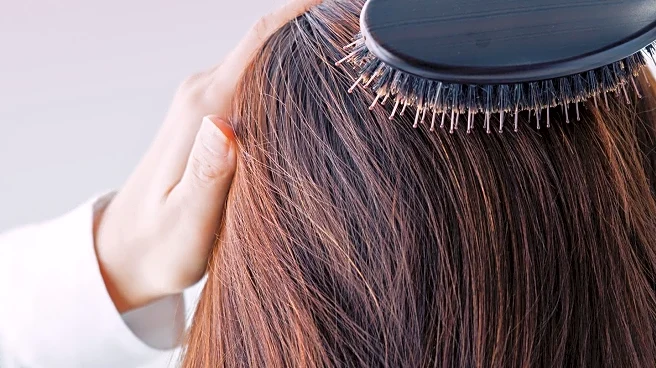What's Happening?
Users of hormonal birth control, such as IUDs, have reported unexpected changes in hair growth, including increased thickness and altered texture. These changes are linked to the hormonal components of birth control, particularly progesterone and estrogen, which can affect hair growth cycles and follicle structure. While hair loss is a known side effect, increased hair growth is less commonly discussed. Experts suggest that synthetic hormones like progestins can lead to androgenic effects, causing thicker and darker hair in certain areas.
Why It's Important?
Understanding the side effects of birth control is crucial for informed decision-making regarding reproductive health. The impact on hair growth highlights the broader effects of hormonal treatments on the body, which may not be fully understood or communicated to patients. This information is vital for healthcare providers to address patient concerns and tailor contraceptive options to individual needs, potentially influencing public health policies and educational efforts around birth control.
What's Next?
Patients experiencing adverse effects are encouraged to consult with healthcare providers to explore alternative contraceptive methods with lower androgenic activity. Increased awareness and research into the side effects of birth control could lead to improved patient education and more personalized healthcare solutions. The medical community may also push for more comprehensive studies on the long-term effects of hormonal contraceptives.
Beyond the Headlines
The discussion around birth control and hair changes underscores the need for more research into women's health issues, which have historically been underfunded. It also raises questions about the societal expectations of beauty and the psychological impact of such changes on individuals. Greater transparency and education about potential side effects could empower women to make more informed choices about their reproductive health.











